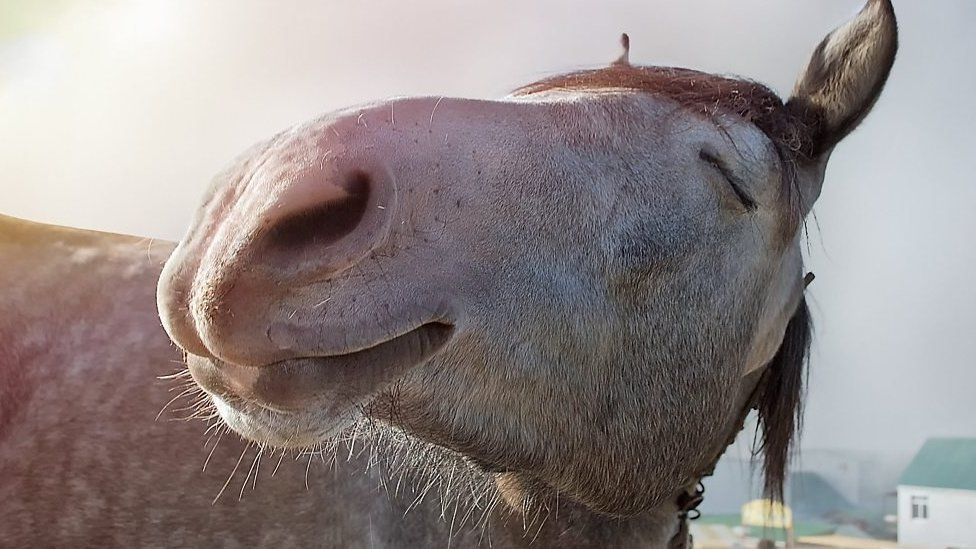What's the difference between a horse, a donkey and a mule?
- Published
- comments

The question you've always wanted to know the answer to! And no, we're not horsing around!
It's a question for the ages - what is the difference between a horse, a mule and a donkey? And what is a pony, really?
We're here to give you a helping hoof!
Below are some of the mane differences you can spot between these four animals.
You'll neigh find a better explanation.
So what are the differences?
All you need to know is that animals like horses, donkeys and mules are entirely separate species.
However, they have all evolved from the same family called equidae.
These species all belong to a sub-family of animals called equus.
Here are some clues to how you can tell the difference between horses, donkeys, mules and ponies!
Horses
Horses are taller than ponies
Horses have thin coats and short ears
Horses are taller than mules, donkeys and ponies
A horse's speed and how easy they are to train is largely determined by their breed
They're known for having long manes and tails, but again, this is determined by their breed
Horses are herd animals, which means they prefer to travel in groups
Ponies
Ponies are in fact horses but just a shorter variety
Ponies are typically very strong and can be gentle - this is why many are used to help children learn to ride
The only difference between ponies and horses is that ponies are shorter!
A fully grown pony will be below 14.2 hands (1.44 metres) at the highest part of a horse's back - known as the withers
There are exceptions to this rule, but this height is often used as a guide
Ponies are also herd animals, so like horses they prefer being in groups
Donkeys
Donkeys tend to be intelligent, strong and more cautious than horses
Donkeys are a completely separate species to horses and ponies as they have a different number of chromosomes
The have longer ears compared to horses, their coats are less waterproof and their manes and tails are thinner. This is largely because donkeys originate from Africa and are designed to cope with a warmer climate
Donkeys' hooves are smaller and more upright compared to horses and ponies
They are less likely to run away when faced with danger compared to horses and ponies
Mules
Mules have a donkey father and a horse mother
Mules are actually a very special mix - they have a donkey father and horse mother, and they often inherit the best qualities of both
They are typically very strong for their size compared to horses and are able to cope with bad weather better than donkeys
Mules are very intelligent and they rarely become ill
Mules born from a donkey mother and horse father are known as hinnys and tend not to be as strong as mules
Two mules aren't able to reproduce because they have an odd number of chromosomes
Spotting the difference between horses, ponies, donkeys and mules can be a little tricky, but there are some things you can look out for to hep you tell the animals apart.
Vet Nicky Jarvis who is the head of sanctuary care at Redwings Horse Sanctuary told Newsround:
"A top tip for spotting a horse, donkey or mule is to take a close look at their features, like their ears, hooves and tails.
"They can differ greatly between the three and will be your first clues in detecting which wonderful creature you are meeting.
"A good idea is to visit an equine sanctuary where you'll be able to see horses, donkeys and mules side by side and you'll quickly spot the differences!"
- Published20 August 2018
- Published16 February 2019
- Published29 August 2018
